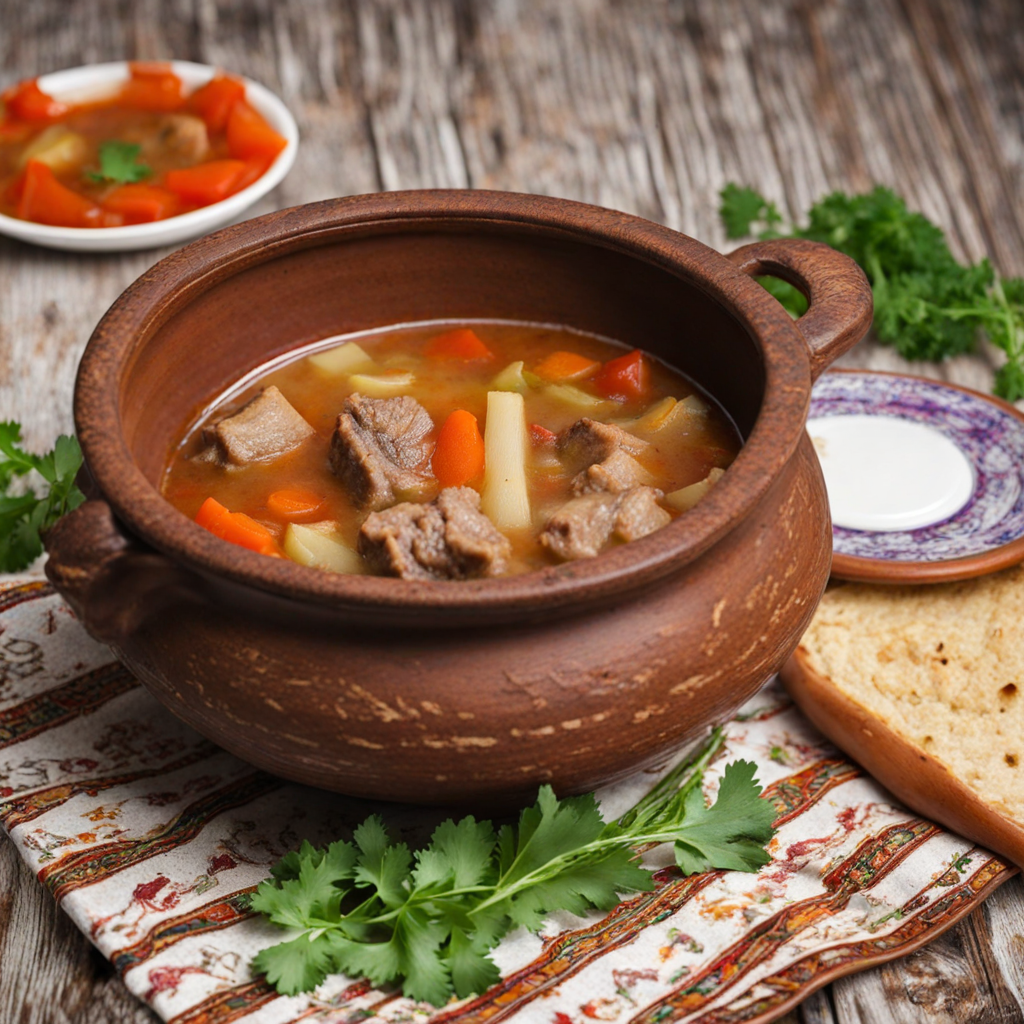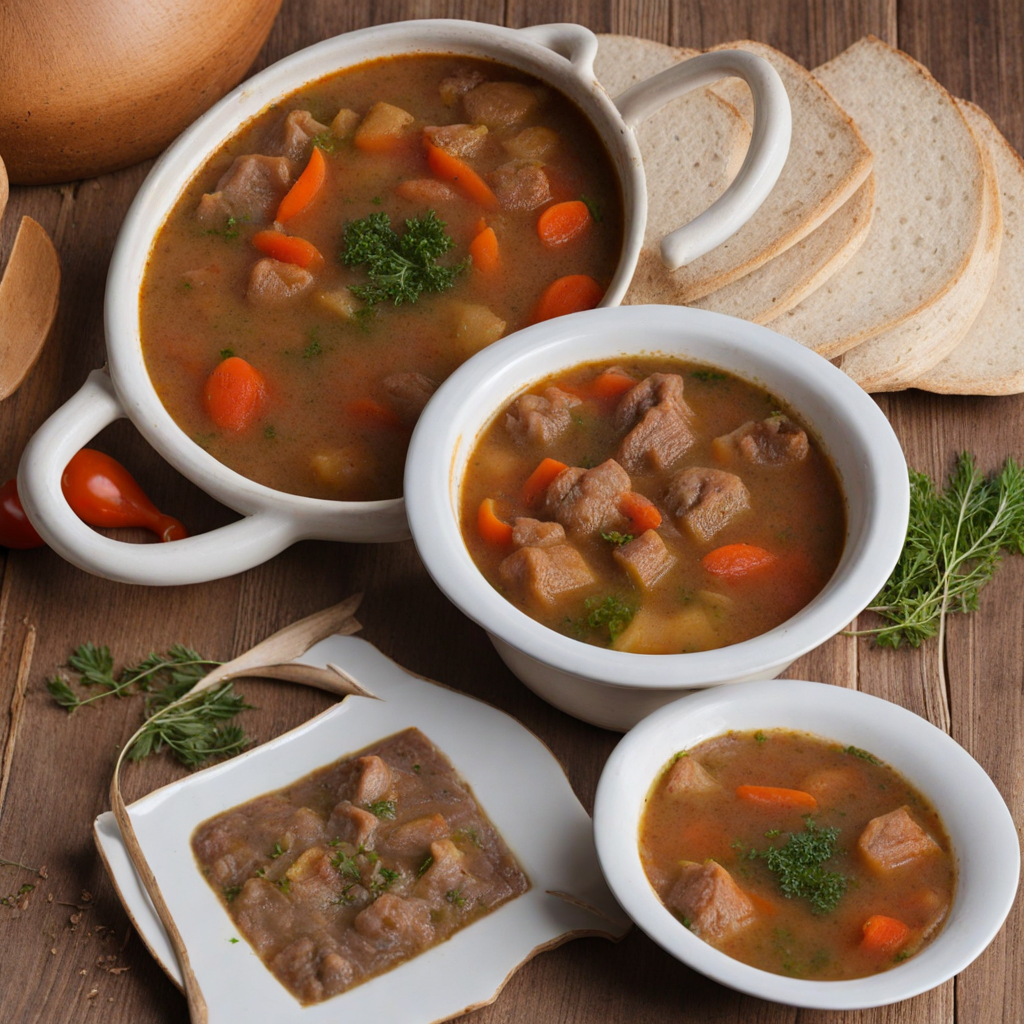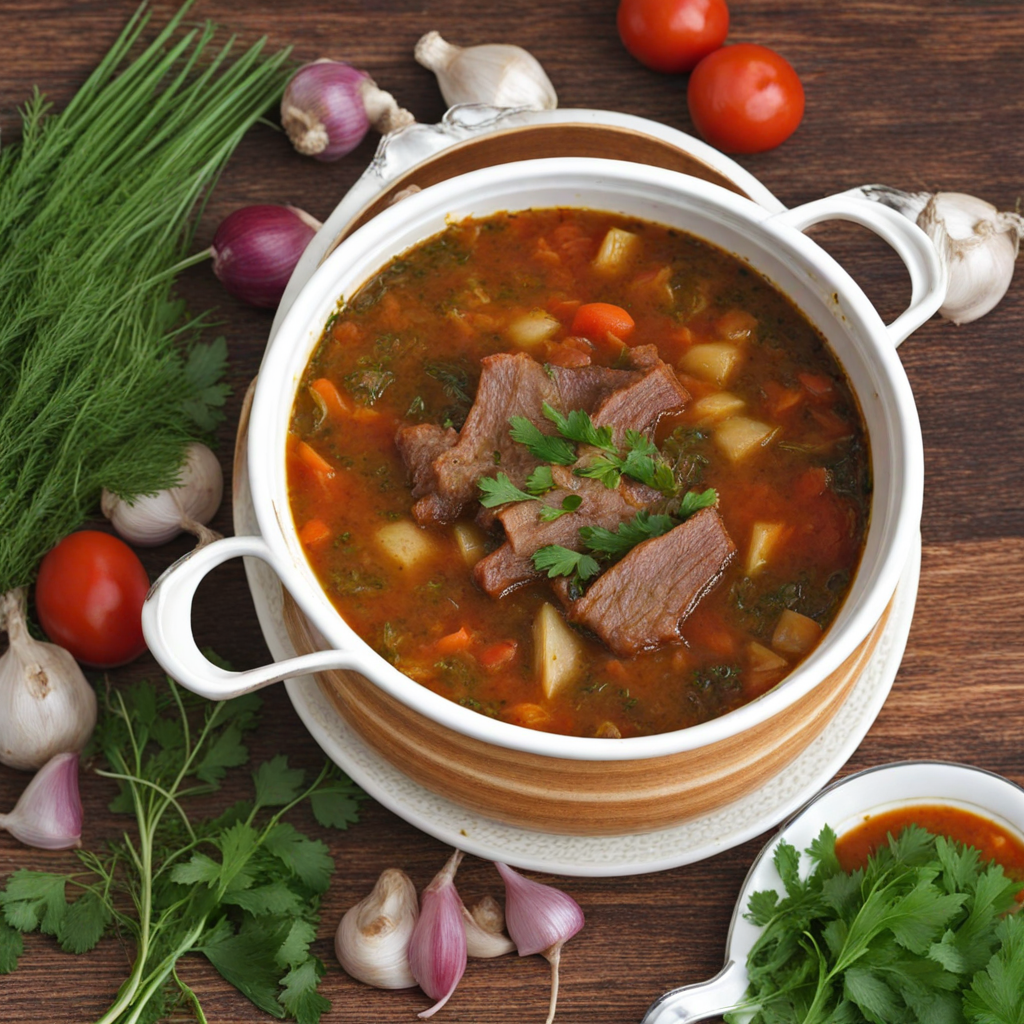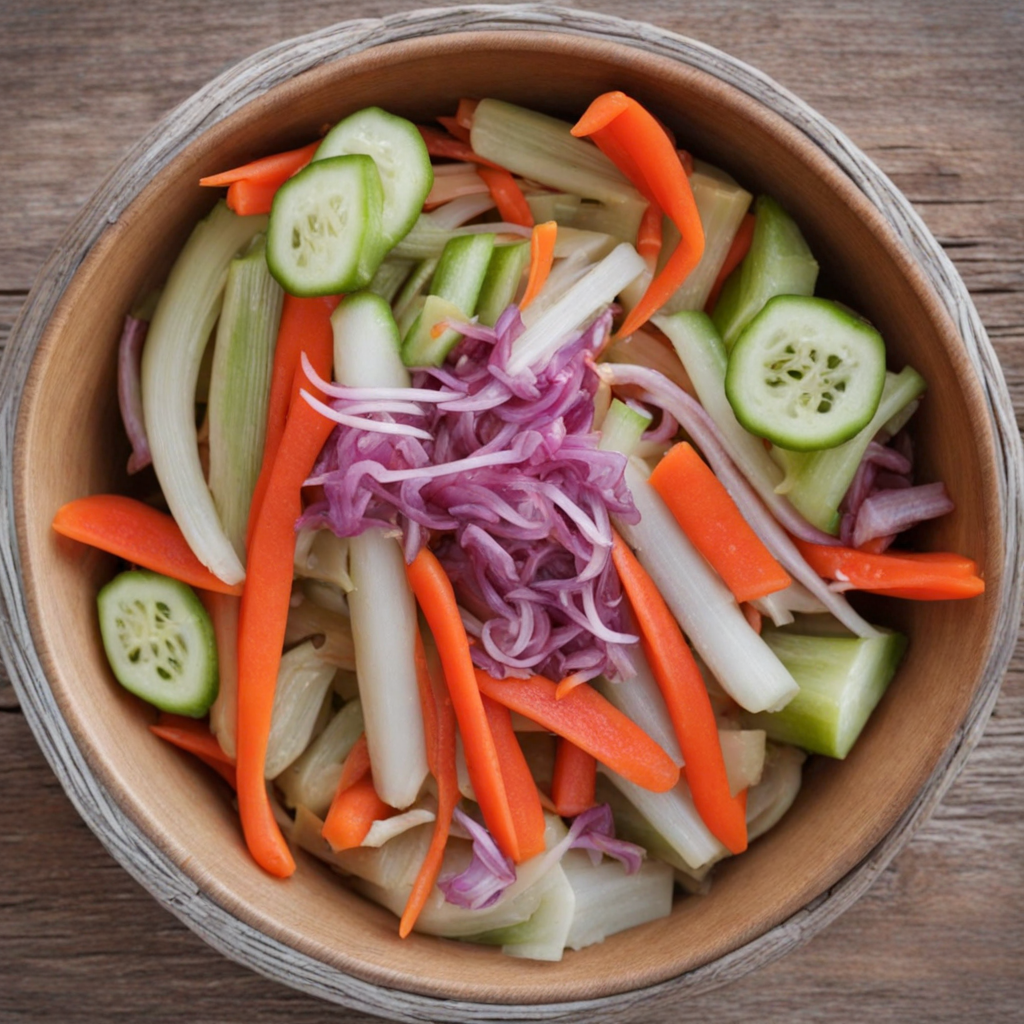Piti
Piti is a traditional Azerbaijani dish that offers a unique and hearty experience for those looking to explore new flavors. This aromatic stew is typically made with tender pieces of lamb or beef, which are slow-cooked to perfection along with a medley of vegetables such as potatoes, carrots, and chickpeas. The key to its rich taste lies in the careful layering of spices, including saffron, turmeric, and black pepper, which infuse the dish with a warm and inviting aroma that tantalizes the senses. The cooking method of Piti is as significant as its ingredients. Traditionally, it is prepared in individual clay pots, allowing each portion to develop its own distinct flavor profile. The slow-cooking process, often taking several hours, ensures that the meat becomes incredibly tender while the vegetables meld together, creating a harmonious blend of textures. The dish is typically served with a side of fresh herbs, enhancing the overall freshness and depth of the meal. What makes Piti particularly special is the way it is enjoyed. Diners often scoop the stew out of the pot and mix it with a piece of warm bread, creating a comforting and communal dining experience. The combination of the savory meat and the wholesome vegetables, paired with the aromatic spices, results in a dish that is not only filling but also deeply satisfying. For those seeking to discover new tastes, Piti offers a delightful journey into the heart of Azerbaijani cuisine, showcasing the country's rich culinary heritage.
How It Became This Dish
The Rich History of 'Piti': A Culinary Gem from Azerbaijan #### Origins: A Taste of Tradition The dish known as 'پیتی' (pronounced "piti") is a traditional Azerbaijani stew that encapsulates the country’s rich culinary heritage. Its roots can be traced back to the mountainous regions of Azerbaijan, particularly the Sheki and Ganja areas, where the unique climate and geography have influenced the local cuisine. Piti is a product of both necessity and creativity, born out of the agricultural and pastoral traditions that have defined Azerbaijani life for centuries. Historically, the ingredients of piti were sourced from the surrounding environment. The dish is primarily made from lamb or beef, chickpeas, potatoes, and a variety of spices that reflect the aromatic profile of the region. The use of lamb is particularly emblematic of Azerbaijani cuisine, as sheep farming has been a staple of the country’s pastoral economy. The choice of chickpeas not only adds texture but also showcases the influence of Middle Eastern culinary traditions, indicating the interchange of flavors and techniques across borders. #### Cultural Significance: A Symbol of Hospitality Piti is more than just a dish; it is a symbol of hospitality and communal living in Azerbaijan. Traditionally, it is served during gatherings, celebrations, and significant family events, reinforcing social bonds and cultural identity. The preparation of piti is often a communal activity, where family members come together to cook and share stories, thus fostering a sense of community. The dish is typically served in a special clay pot called a "piti pot," which enhances the flavors through slow cooking. This method of cooking not only preserves the nutrients but also allows for the melding of flavors, resulting in a rich and hearty stew. The pots have become iconic in Azerbaijani culture and are often associated with the warmth and generosity of Azerbaijani hospitality. In Azerbaijan, the act of enjoying piti is often accompanied by rituals that celebrate friendship and community. It is common for guests to be invited to partake in this dish, and sharing a bowl of piti is seen as a gesture of goodwill and camaraderie. The rich flavors and hearty nature of the stew make it a comforting meal, especially during the colder months, adding to its status as a beloved national dish. #### Development Over Time: From Past to Present The evolution of piti reflects the broader changes in Azerbaijani society and cuisine. While the basic recipe has remained relatively consistent over the centuries, variations have emerged that showcase regional ingredients and preferences. In urban areas, for instance, piti may be prepared with modern cooking techniques or combined with contemporary ingredients, appealing to younger generations while still honoring traditional methods. The 20th century brought significant changes to Azerbaijani society, including urbanization and the influence of globalization. As people migrated to cities like Baku, traditional dishes like piti adapted to the new culinary landscape. Restaurants began to offer their own interpretations of the stew, often putting a modern twist on the classic recipe while maintaining its essence. In recent years, there has been a resurgence of interest in traditional Azerbaijani cuisine, with chefs and home cooks alike seeking to revive and preserve the authenticity of dishes like piti. Food festivals, culinary competitions, and cooking classes have played a significant role in promoting this dish, ensuring that it continues to be a staple in Azerbaijani households. #### Piti in Contemporary Azerbaijan Today, piti remains a beloved dish in Azerbaijan, celebrated for its robust flavors and heartwarming qualities. It is often featured on menus in traditional restaurants, where chefs take pride in showcasing the authenticity of their recipes. The dish is also a popular choice for special occasions, such as weddings and holidays, where it symbolizes abundance and joy. In modern culinary practices, there is an increasing emphasis on the use of organic and locally-sourced ingredients, aligning with global trends toward sustainability. This movement has influenced the way piti is prepared, with chefs opting for free-range meats and fresh vegetables from local farms. Such practices not only honor traditional methods but also promote the health and well-being of the community. Moreover, the digital age has facilitated the sharing of Azerbaijani cuisine beyond national borders. Social media platforms, food blogs, and cooking channels have introduced piti to a global audience, allowing food enthusiasts worldwide to explore and appreciate this unique dish. The exchange of recipes and cooking techniques fosters a sense of cultural exchange, further enhancing the dish's significance as a culinary ambassador of Azerbaijan. #### Conclusion: A Culinary Legacy The history of piti is a testament to the rich tapestry of Azerbaijani culture and the enduring legacy of its culinary traditions. From its humble origins in the mountainous regions to its status as a celebrated dish in contemporary society, piti continues to capture the hearts and palates of those who encounter it. It serves as a reminder of the importance of community, hospitality, and the shared joy of food. As Azerbaijan continues to embrace its culinary heritage while adapting to modern influences, piti stands as a symbol of resilience and cultural pride. It invites us to gather around the table, share stories, and savor the flavors of a land rich in history and tradition. In every spoonful of this hearty stew, one can taste the essence of Azerbaijan—a nation where food is not merely sustenance but a celebration of life, connection, and culture.
You may like
Discover local flavors from Azerbaijan







